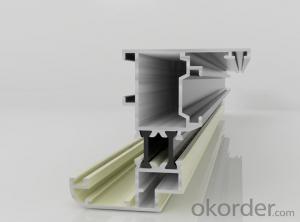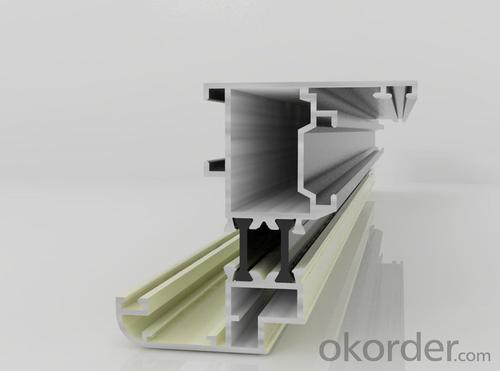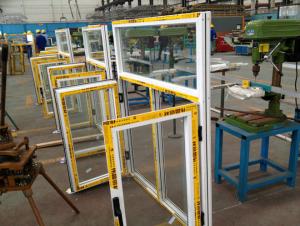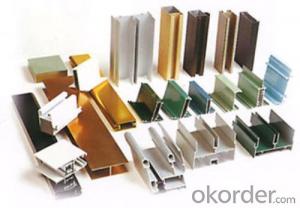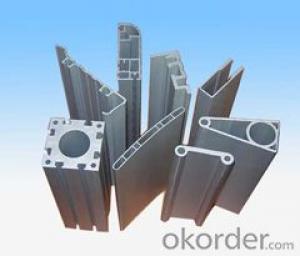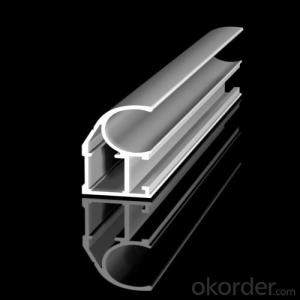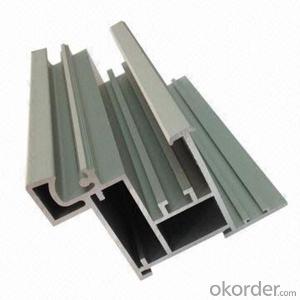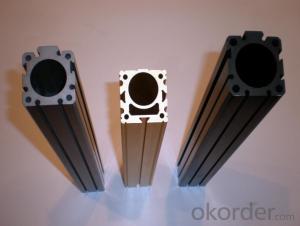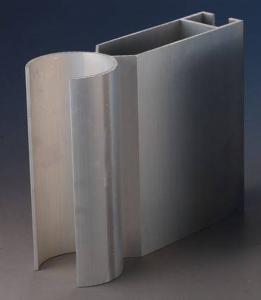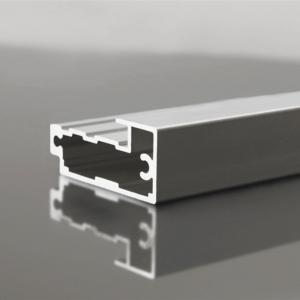Solidworks Aluminum Weldment Profiles:Sunflowers for Heat Sink Aluminum Profile
- Loading Port:
- Shanghai
- Payment Terms:
- TT OR LC
- Min Order Qty:
- 5 m.t.
- Supply Capability:
- 5000 m.t./month
OKorder Service Pledge
OKorder Financial Service
You Might Also Like
Specification
Structure of Aluminum Profile Sunflowers For Heat Sink Description:
We have more than 10 years experiences on manufacturing kinds of aluminum profiles, such as Aluminum Window & Door profiles, Aluminum tile trim profiles, Aluminum profiles for LED light, Round/Square General profiles, Aluminum heat sink, Aluminum heating insulation profiles, Curtain wall Aluminum profiles, and others Industry profiles.
Our products have exported to all over the world, and we also have a large of market share in Algeria, Angola, Philippine, Guinea, Ghana, South Africa, Nepal, Nigeria, Tanzania, Iraq etc.
Main Features of the Aluminum Profile Sunflowers For Heat Sink:
1, Strong R&G: help customers finalize the design, strong tool design ability, excellent, pressing and surface treatment technology;
2, Strong quality management: ISO&SGS SYSTEM;
3, 24 hours on-line communication, professional, patient, flexible;
4, High capacity of manufacturing and wide range of products;
5, We can provide secondary manufacturing.
6, High corrosion resistance, high weather resistance and good wear resistance.
7, Alternative surface treatment: Colorful ANODIZE, POWDER COATING, ELECTROPHORESIS & WOODEN GRAIN. Plentiful colors upon your needs.
8, Excellent material for smooth and subtle edges, elegant appearance.
9, Strong coated adhesion which is suitable for construction and industrial material.
Images of the Aluminum Profile Sunflowers For Heat Sink:
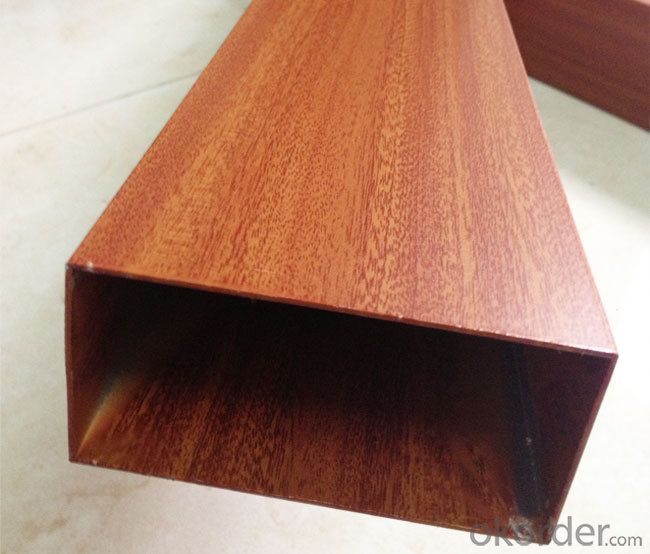

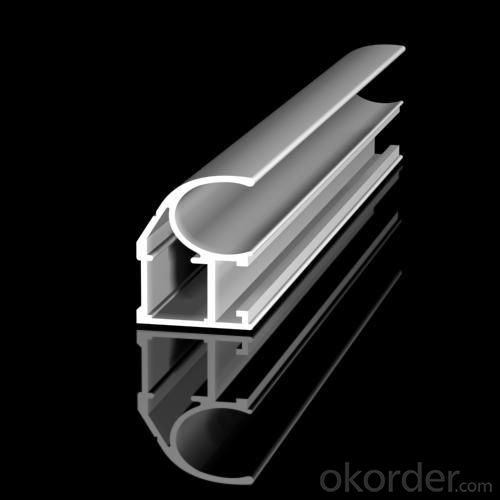
Aluminum Profile Sunflowers For Heat Sink Specification:
Material | Alloy Aluminum 6063,6061,6005 or customer nominated |
Temper | T3, T4, T5, T6 |
Surface | Anodize, electrophoresis, powder coating, PVDF coating, wood grain painting, matted, etc. |
Colour | Any colour based on Standard Germany RAL Mark |
Length | Coating 6.5 meters, Anodizing 6.5 meters, Mill finish 5 meters |
Press Machine | 500-4000 tons all together 64 press lines. |
Fabrication | 1. Windows and doors; 2. Drilling; 3. Bending; 4. Cutting; 5. etc. |
Certificate | ISO 9001 |
Moulding | 1. Using our moulds, no fee; |
2. Using customer drawing, opening mould, usually about 10~50 tons then the moulding can be refunded. | |
3. Mould cost is negotiable base on the order quantity | |
Capability | Annual output 100,000 tons |
FAQ:
1.Q: What about leadtime ?
A: Normally the leadtime is 60days after we receive the deposit and confirm the details. All the press machines we use is the best quality in China Yangli brand. The press machine leadtime from Yangli is 50days, the best leadtime we can give is 60days.
2.Q: What's the lead time for moulds?
A: Normally the mould leadtime is 45 days after we confirm all the details with customer. Our professional mechanical enginners from Austria will design the mould according to the samples from customer, or by the specifications offered by customers.
3.Q:What kinds of mould you can make? and what is your strong point for the moulds?
A: we can make wrinkle wall mould and smooth wall mould both. For wrinkle wall mould we can make, 79" pan, fish pan, bbq pan. For smooth wall mould we can make muffin cup, and cake cup, tar cup,etc. We can also make 2 or 3 portion conatiner moulds as long as you offer us sample or specifications. Our strong points are all our moulds are WEDMLS cut, which makes the mould more accurate and precise. Important materials likestainless steel parts we make in Austria. We also recut after heat treatment, which most of makers do not take this process.
- Q: How do aluminum profiles compare to plastic profiles?
- Aluminum profiles and plastic profiles are commonly used in various industries for different applications. When comparing the two, there are several factors to consider. Strength and Durability: Aluminum profiles are generally stronger and more durable than plastic profiles. Aluminum has high tensile strength, allowing it to withstand heavy loads and resist deformation. Plastic profiles, on the other hand, are more prone to cracking or breaking under excessive stress. Weight: Aluminum profiles are heavier than plastic profiles. This can be an advantage or disadvantage depending on the specific application. Aluminum's weight can provide stability and strength, while plastic's lightweight nature can make it easier to handle and install. Corrosion Resistance: Aluminum profiles have excellent corrosion resistance properties. They can withstand exposure to various environmental conditions, making them suitable for outdoor applications. Plastic profiles, however, are not as resistant to certain chemicals or UV radiation, which can cause degradation over time. Flexibility and Design: Plastic profiles offer more design flexibility compared to aluminum profiles. Plastic can be easily molded into complex shapes and customized according to specific requirements. Aluminum, although less flexible, can still be shaped or extruded into different profiles with some limitations. Thermal and Electrical Conductivity: Aluminum profiles have superior thermal conductivity, allowing them to dissipate heat more effectively. They are often used in applications where heat dissipation is critical, such as electronics or heat sinks. Plastic profiles have lower thermal conductivity and are less suitable for such applications. Cost: Plastic profiles are generally more cost-effective than aluminum profiles. The manufacturing process for plastic profiles is simpler and cheaper, resulting in lower production costs. Aluminum profiles, on the other hand, require more advanced manufacturing techniques and additional finishing processes, making them relatively more expensive. In conclusion, the choice between aluminum and plastic profiles depends on the specific requirements of the application. Aluminum profiles offer superior strength, durability, and corrosion resistance, making them suitable for heavy-duty or outdoor applications. Plastic profiles, on the other hand, provide more design flexibility and cost-effectiveness, making them ideal for lightweight or customized applications.
- Q: The 50 series and the 60 series of aluminum profiles, which one is good?
- Of course, 60 of the good.60 and 50 refers to profiles, from the indoor to outdoor overall thickness of 60MM and 50MM.
- Q: What are the different surface polishing options for aluminum profiles?
- Aluminum profiles offer various surface polishing options, each with its own shine and finish levels. These methods include mechanical polishing, chemical polishing, electrolytic polishing, and anodizing. Mechanical polishing involves using abrasives and polishing compounds to physically eliminate surface imperfections and achieve a smooth, reflective finish. This can be done manually or with automated machines. While it provides a high shine, it requires careful attention to detail and multiple steps. Chemical polishing, on the other hand, employs chemical solutions to dissolve a thin layer of aluminum, resulting in a smoother surface. It is often used for large-scale production due to its quick and uniform application, but it may not offer the same level of shine as mechanical polishing. Electrolytic polishing utilizes an electric current to eliminate surface imperfections and create a polished finish. By using the aluminum profile as an anode and a conductive material as the cathode, electrolytic polishing produces a mirror-like finish with excellent precision and uniformity. Although not a polishing method itself, anodizing is a commonly used surface treatment for aluminum profiles. It involves creating a protective oxide layer on the metal's surface through an electrochemical process. Anodizing enhances the appearance of profiles by providing a smooth, colored, or clear finish, while also improving their durability and resistance to corrosion. The choice of surface polishing option depends on factors such as the desired shine level, the complexity of the profile's design, and the intended application. It is essential to consider cost, time, and quality requirements when selecting the most suitable option, as each method has its advantages and limitations.
- Q: Can aluminum profiles be used in marine environments?
- Yes, aluminum profiles can be used in marine environments. Aluminum is often chosen for its excellent corrosion resistance and lightweight properties, making it ideal for marine applications. It is commonly used in the construction of boats, shipbuilding, and offshore structures due to its durability and ability to withstand exposure to saltwater and harsh weather conditions.
- Q: Are aluminum profiles suitable for exhibition stands?
- Yes, aluminum profiles are suitable for exhibition stands. Aluminum is a popular choice for exhibition stands due to its lightweight nature, durability, and versatility. Aluminum profiles can be easily assembled and disassembled, making them convenient for transportation and installation at different exhibition venues. Additionally, aluminum profiles can be customized to create various shapes and sizes, allowing for unique and eye-catching exhibition stand designs. The material also offers a sleek and professional appearance, making it suitable for showcasing products or services at trade shows or exhibitions. Furthermore, aluminum profiles can be easily modified or extended if changes need to be made to the exhibition stand layout. Overall, aluminum profiles are an excellent choice for exhibition stands due to their practicality, aesthetic appeal, and adaptability.
- Q: Can aluminum profiles be used in modular exhibition system manufacturing?
- Certainly! In the realm of manufacturing modular exhibition systems, aluminum profiles prove to be of great utility. Renowned for their lightweight and durable attributes, aluminum profiles become an ideal choice for the construction of modular exhibition systems. Their effortless handling and assembly facilitate swift and efficient installation and dismantling of exhibition booths. Moreover, the flexibility to customize and reconfigure aluminum profiles to cater to specific design preferences further enhances their versatility in the manufacturing of modular exhibition systems.
- Q: This question asks for the typical specifications and measurements of aluminum profiles that are used in the construction of building frames.
- <p>Aluminum profiles used in building frames come in various specifications and measurements. Commonly, they include I-beams, T-profiles, and C-channels with different thicknesses and dimensions. Sizes can range from 30mm to 200mm in width and from 1mm to 10mm in thickness. The length of these profiles can vary, but they are often available in standard lengths such as 6 meters. Specific dimensions and tolerances are determined by the building's design requirements, load-bearing needs, and manufacturing standards. It's also important to consider the alloy type, which can affect strength and corrosion resistance. Always consult with an engineer or supplier for the exact specifications suitable for a particular project.</p>
- Q: Are aluminum profiles suitable for constructing energy-efficient building systems?
- <p>Yes, aluminum profiles can be used to create energy-efficient building systems. They are lightweight, strong, and have excellent thermal conductivity, which can be advantageous in heat transfer management. Aluminum profiles can be used in the construction of windows, doors, and facades, which are critical for insulation and energy conservation. Additionally, their malleability allows for precise engineering to minimize heat loss and maximize energy efficiency. Proper insulation and sealing techniques can further enhance the energy efficiency of buildings constructed with aluminum profiles.</p>
- Q: Are there any safety considerations when working with aluminum profiles?
- Yes, there are several safety considerations when working with aluminum profiles. Firstly, aluminum dust and chips can be combustible, so it is important to have proper ventilation and avoid creating sparks or heat sources near the material. Additionally, aluminum profiles can have sharp edges or burrs, which can cause cuts or injuries if not handled carefully. It is advisable to wear appropriate personal protective equipment such as gloves, safety glasses, and a dust mask to prevent any potential hazards.
- Q: This question asks about the various methods employed in the production of aluminum profiles, which are long, extruded shapes made from aluminum.
- <p>Aluminum profiles are manufactured using several processes, primarily extrusion, which involves forcing aluminum through a die to create specific shapes. Other processes include casting, where aluminum is poured into molds, and rolling, used to create flat sheets or plates. Machining processes like cutting, drilling, and milling are also used for further shaping and finishing. Additionally, aluminum profiles can be fabricated through bending, which shapes the material into curves or angles, and welding, which joins pieces together. Surface treatments like anodizing, painting, or powder coating are also applied to enhance appearance and durability.</p>
Send your message to us
Solidworks Aluminum Weldment Profiles:Sunflowers for Heat Sink Aluminum Profile
- Loading Port:
- Shanghai
- Payment Terms:
- TT OR LC
- Min Order Qty:
- 5 m.t.
- Supply Capability:
- 5000 m.t./month
OKorder Service Pledge
OKorder Financial Service
Similar products
Hot products
Hot Searches
Related keywords
